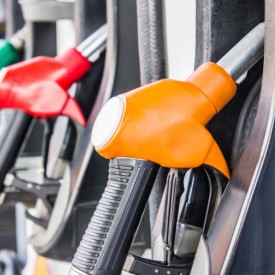Sticking to the slow lane since last week, the national average for a gallon of gas dipped slightly for a few days before rising a fraction of a cent higher to $3.15. However, seasonal demand trends, higher costs for oil and routine refinery maintenance will likely push pump prices slowly higher soon.
“It feels like being in a car with a cold battery, cranking away yet slow to turn over,” said Andrew Gross, AAA spokesperson. “But gas prices will likely start increasing around Valentine’s Day.”
According to new data from the Energy Information Administration (EIA), gas demand increased from 8.14 to 8.81 million b/d last week. Meanwhile, total domestic gasoline stocks decreased by 3.1 million bbl to 251 million bbl. Higher gas demand and tighter supply have contributed to elevated pump prices. If demand continues to increase, drivers could see pump prices rise steadily.
Today’s national average of $3.15 is eight cents more than a month ago but 29 cents less than a year ago.
Quick stats:
Since last Thursday, these 10 states have seen the largest changes in their averages: Missouri (+22 cents), Wisconsin (+16 cents), Kentucky (+15 cents), Utah (+13 cents), Illinois (+10 cents), Florida (−10 cents), New Mexico (−7 cents), Ohio (+6 cents), Michigan (+5 cents) and Arizona (+5 cents).
The nation’s top 10 least expensive markets: Oklahoma ($2.67), Wyoming ($2.69), Colorado ($2.72), Kansas ($2.74), Mississippi ($2.75), Arkansas ($2.75), Missouri ($2.79), South Dakota ($2.81), Texas ($2.82) and North Dakota ($2.82).
Oil market dynamics:
At the close of Wednesday’s formal trading session, WTI increased by 55 cents to settle at $73.86. Oil prices rose after the EIA reported that refinery oil processing was down slightly from 82.9 to 82.4 percent, signaling that winter maintenance increases ahead of the spring driving season continues. Additionally, the EIA reported that total domestic commercial crude stocks increased by 5.5 million bbl to 427.4 million bbl.
